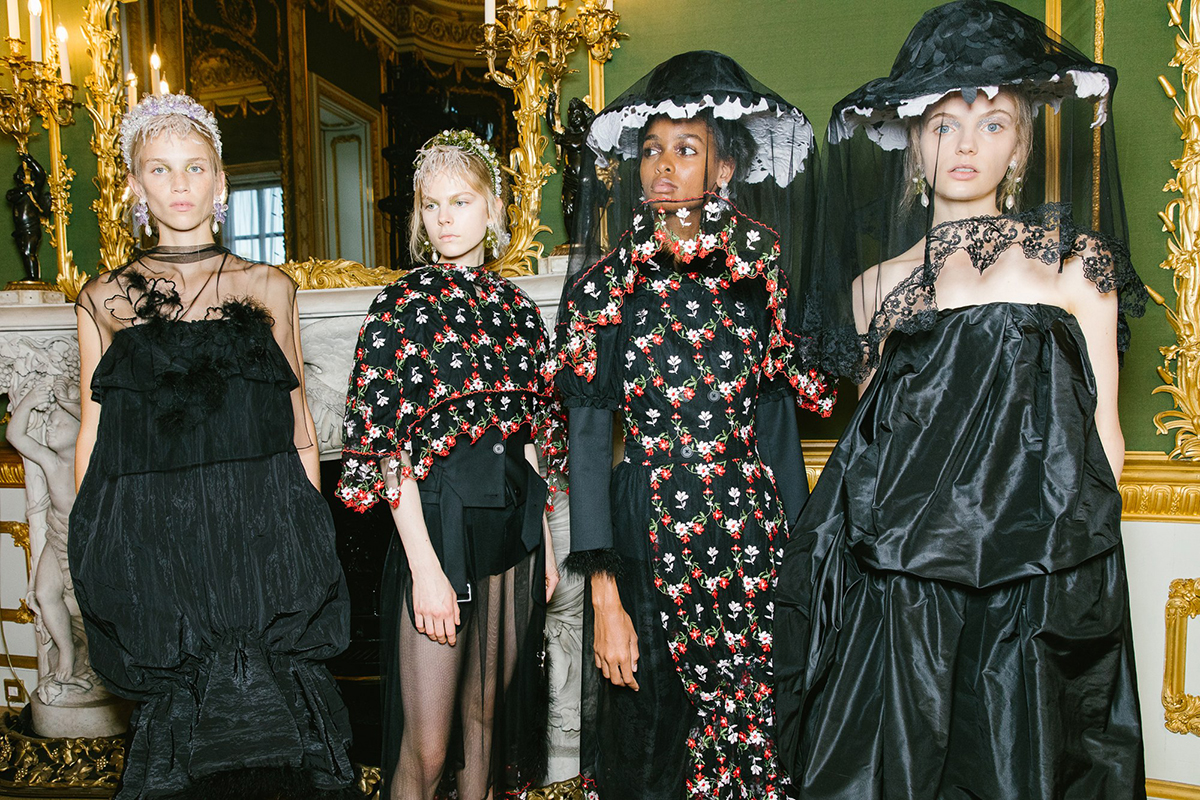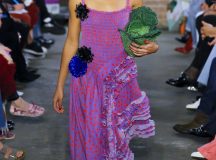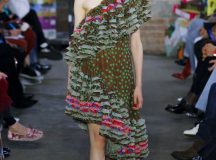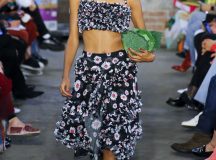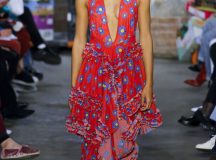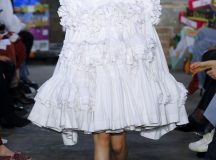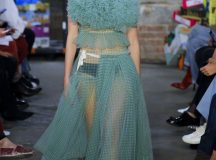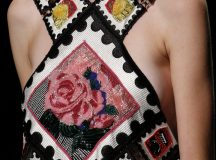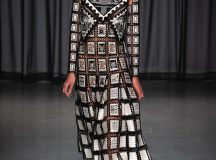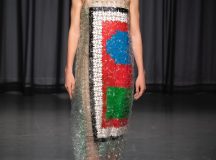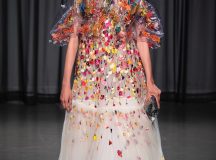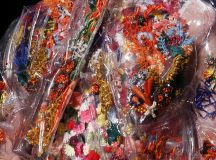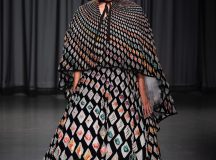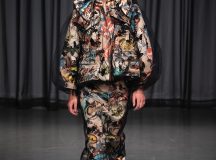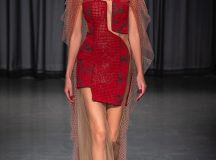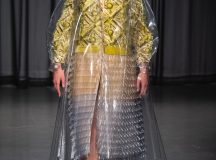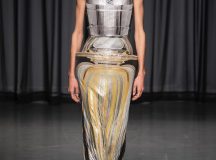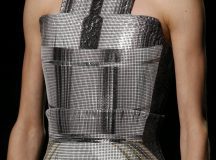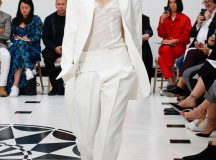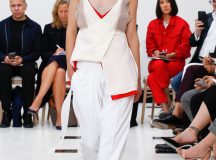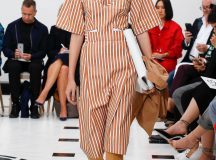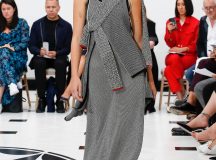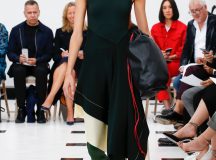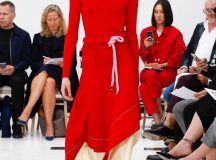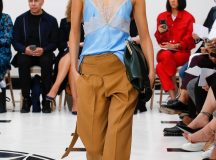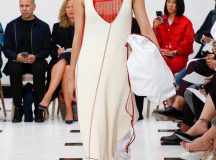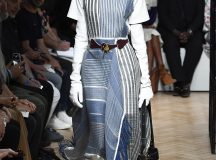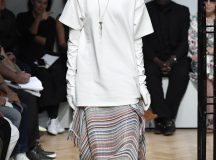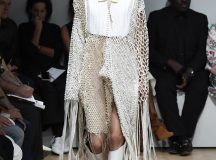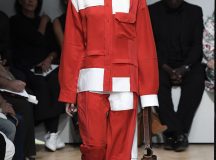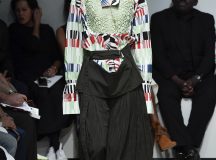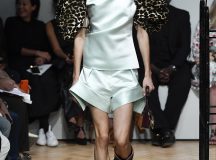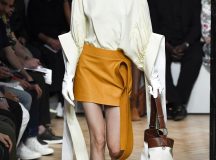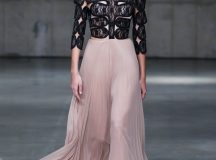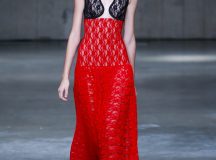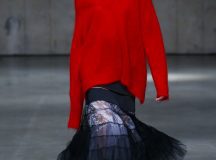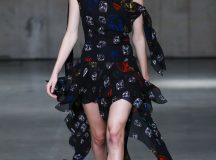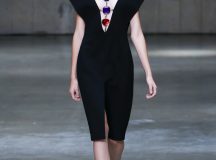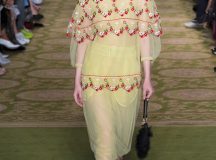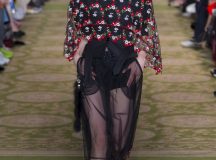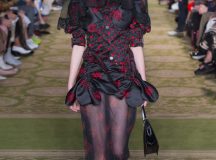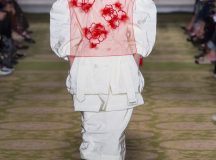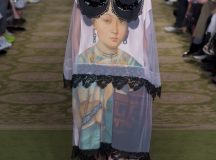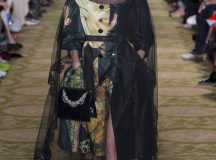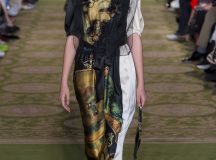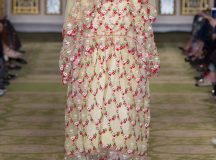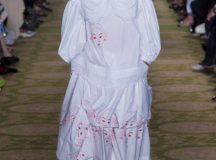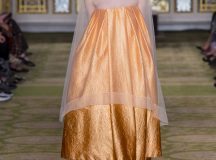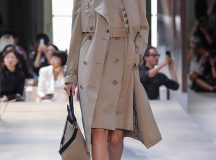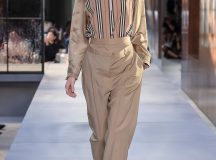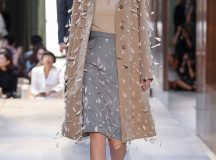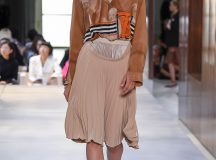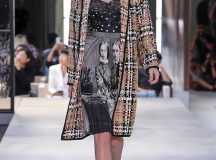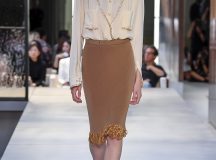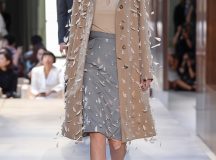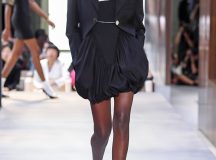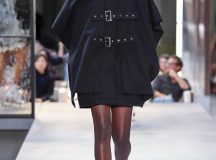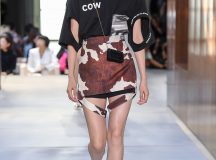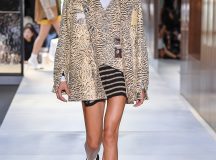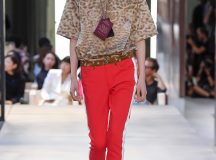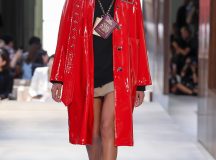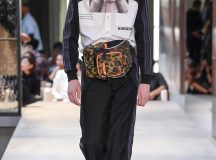London Designers Take Stance Toward Britain’s Looming Exit. Amidst the country separation from European Union, London designers are putting together a band of remarkable collections during London Fashion Week to tackle the upcoming sorrowful time.
England is in mourning. The country is approaching its separation from the European Union, which will take place next March, yet the repercussions are already visible during this season London Fashion Week. But what does the so-called Brexit has got to do with fashion? To start, this week sees the once young London designers – Mary Katrantzou, Simone Rocha, Molly Godard, et al – fully bloom into who they are as a designer and where they are going next as a British brand.
The expansion comes into mind at Molly Godard, who builds a collection of more than just explosive frilly dresses that brought her into a spotlight. This time she also offers separates, slick dresses, joyful floral prints, and a few well-made tailored pieces, shown in a made-up market as a backdrop. The result is a collection with an optimistic mind. Think young girls shopping for fresh anything at a Sunday market. Only the market could be anywhere. Somewhere in southern Europe maybe? Celebrations are also in place this week. Both of Mary Katrantzou and Victoria Beckham is having their tenth-anniversary and they show no sign of slowing down. Beckham, who is presenting her collection in London for the first time, sends out a collection that could work on any woman. Going forward, she wants to make sure her clothes could speak — and work — for generations of a woman. With Stella Tenant opening her show in a white relaxed pantsuit, worn over a seductive lace-trimmed camisole in the same color, her message comes through. With Mary Kantrantzou, she recreates her previous iconic works instead — stamp, heraldic emblems, insect, and the most iconic of all, perfume dresses — and elevates them with couture-like craftsmanship. It is stellar in many ways, but more importantly, this collection is a declaration that Mary Katrantzou is here and better than ever.
Then there were resistances against establishments. Jonathan W. Anderson sends out tough-looking girls covered in inverted Y-line shirt-cum-dresses, leather head wraps along with elbow-length gloves and stomping sleek boots, as if they are ready to battle through the gloom that lies ahead. It is an assertive and sophisticated outing from Jonathan W. Anderson, all the while retaining that modern quirkiness he is known for. The same happens at Christopher Kane, though in a different form. After his separation (pun intended) from one of the big guys, Kering, Kane is not losing his confidence. If you analyze his collections from a business perspective, it is hard to pin-point Kane’s key pieces and it is even harder to categorize his brand based on a single product. He could go from extremely pretty one season and then go sensual the next. Customers might wonder though, what do you go to Christopher Kane to invest in? But who cares? His clothes are not for the softies to begin with and so does he. This season, he assembled what might be lacy eye masks from an adult shop and turn them into beautifully structured bodices, shoulder straps and shoe tongue, followed by an army of dazzling looks — a mix of disco ball-esque stripes and red-hot lace. It is thought-provoking without being crude, and very chic too.
When there is Triumph, there’s bound to be mourning. At Simone Rocha, faces are covered with beautiful veils that descend from even more beautiful hats, signaling pain and sorrow that are approaching. However, her clothes speak otherwise. As melancholic as it is, her powerfully evocative collection feels like a tender reminder that she comes from an immigrant family — her father is from Hong Kong and her mother is from the Republic of Ireland. Up until this time, we’ve only got to see her mother’s side of story, but this season, Rocha unravels her other side. Through dresses printed with Chinese portraiture swathed in sheer organza; floral-embroidered shawl thrown onto Rocha’s unmistakably puffy silhouette; and imperial concubine-inspired hairstyle, Rocha weaves together a hauntingly beautiful narrative. Not only that it is a reminder, it is also proof that two separate identities combined does not have to be ugly.
Finally, there’s Ricardo Tisci who showed his much-anticipated debut at Burberry. It is perhaps the biggest statement against Brexit as Tisci is a European (Italian to be exact) who went to college in London before leaving for Paris. Interestingly, just before the island closes its door, Tisci is back and now leading Britain’s most iconic house. For his first outing, Tisci wanted to bring the brand toward inclusivity. To showcase London’s diversity, he stated — another statement against Brexit. So came 134 looks, which Tisci divided into three parts: British bourgeoisie, youthquake and polished evening. There are many, too many actually, pieces meant for commercial blockbusters — classic trench coats updated with silky scarf sliding out of the lining, Burberry’s iconic checks turned into a horizontal stripe, some interesting prints, and elegant black gowns — that it forgoes the dream factor that Tisci always brought when he was at Givenchy.
So, what’s Brexit got to do with fashion? For one, it is fascinating to see its creatives and businesses are expanding while the land itself is closing its doors. One couldn’t dream for a better form of a rebellion. And despite a melancholy of the black veil that concealed some of the models (also seen at Erdem, Richard Quinn and Mary Katrantzou) the clothes underneath exude strength to battle depression, and confidence that prove Britain, particularly London, is still, and will always be, the place where talents (from across the globes) grow. After all, like Elsa Schiaparelli once said, “in difficult times, fashion is always outrageous.” (Text Try Sutrisno)
